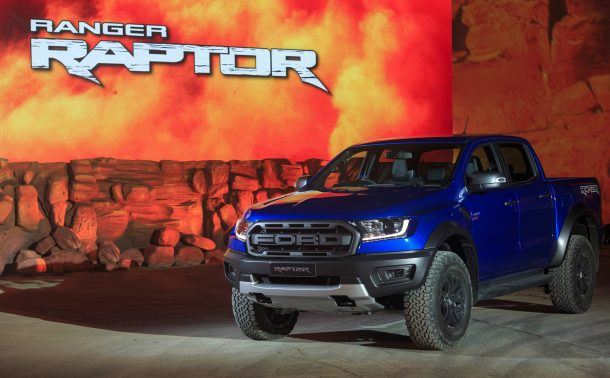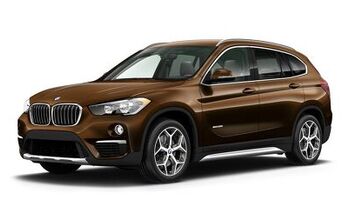Vellum Venom Vignette: A Primer on Black Plastic?

Joe writes:
Can you explain black plastic on cars? I saw an Audi Q7 with black plastic all over the bottom, but then a Q5 doesn’t have it. Sometimes the plastic isn’t black but color coded like an Eddie Bauer Ford or something else.
I may just want some back story or history lesson or someone to help me learn to enjoy this crap on my car.
Sajeev answers:
Scientific American has an impressive overview of cellulose, bakelite, etc. development leading to the creation of our modern plastic world. Such relevance naturally leads to a discussion of why plastic bumpers are so awesome.
Pontiac excellently touted the (body color) Endura nose of the ’68 GTO, but the first of the breed is probably the Lotus Elan. The Ford Sierra’s strikingly integrated plastic bumpers were part of my tribute to Uwe Bahnsen, but the Renault 5 was the first everyman’s car with them. It’s not perfectly integrated, but the 5’s shape is pure 1970s “aerodynamic wedge” fantasy.
The benefits of plastic bumpers are both clear and muddy. Today’s cheaper, sleeker, more integrated plastic parts are a significant safety and collision repair improvement, thanks to cars like the wonderfully engineered 1973 Mercedes ESF 22. But they also weigh less (even older implementations with metal reinforcements) in a crucial location: less weight at the corners has less rotational inertia for more poised transitions requiring less torque in handling maneuvers.
So you better love these things. But love them in black plastic? Not as much.
Like my experience with Stevens-Johnson Syndrome after taking a seemingly benign medication, with every car design benefit comes a risky side effect.
The ever-lowering cost of plastics means beancounters can over-reach with abandon. Think of the 2001 Pontiac Aztek, before the modest smattering of extra paint to mask the ugly. Fleet-spec truck grilles aside, a base model vehicle with black bumpers has gone by the wayside: try finding a 1990s Explorer, Accord or Camry on the road with ‘em.
And today’s black (trimmed) bumpers likely imply you own a premium spec motor: the Audi All-Road and Ford Raptor come to mind.
Oh, the irony. Did this sufficiently “help you learn to enjoy this crap on your car?” Fill in the gaps, Best and Brightest.
[Images: Ford, Audi]
Send your queries to sajeev@thetruthaboutcars.com. Spare no details and ask for a speedy resolution if you’re in a hurry…but be realistic, and use your make/model specific forums instead of TTAC for more timely advice.

More by Sajeev Mehta
Latest Car Reviews
Read moreLatest Product Reviews
Read moreRecent Comments
- MaintenanceCosts I already set out total costs, so this time I'll list what's had to be done on my cars (not counting oil changes, recall, or free services):2019 Bolt (25k mi): new 12v battery, pending tires & battery cooling service2016 Highlander (from 43k to 69k mi): new front rotors, new pads all around, new PCV valve, 2x 12v batteries, light bulbs, pending tires2011 335i (from 89k to 91k): new valve cover gasket, new spark plugs, light bulbs, pending rear main seal1995 Legend (from 185k to 203k): timing belt/water pump, new EGR valve + pipe, struts, strut bushings, drive axles, tie rods, rear control arms, other suspension bushings, coolant hose & brake lines throughout, belts, radiator, valve cover gaskets, new power antenna, 12v battery, coils, spark plugs, tires, rear pads... it's an old car!
- VoGhost Consistent with CR's data. I've spent about $150 total on the Model 3 in six years of ownership, outside of tires.
- VoGhost It's just plain sad that Posky doesn't know that EV batteries are warrantied for 8 years / 100K miles.
- Jkross22 It used to be depreciation was the most expensive part of car ownership. Seems like those days are over (New EVs and lux cars excluded). Maintenance + insurance have taken over. Dealerships offering 2 years of maintenance means nothing. That's $200 tops. It's the unexpected repairs - a wiring harness, computer module, heater core, AWD problems - that will cost dearly. Brakes can be expensive since many cars now can't have rotors resurfaced. Even independents are charging a lot for this work.
- FreedMike VW tossed in two years' maintenance on my car, and the next one's due after the lease is up. But all the car's needed has been oil changes and tire rotations. Unfortunately, the OEM tires (Hankook Kinergy) were unrepentant trash and needed to be replaced at around 23,000 miles. So...my maintenance cost over over a little under three years has been t $800 for the new tires. That sucks, but the new tires (Goodyear Eagle Sport) are a massive upgrade over the Hankooks. Ah well.



































Comments
Join the conversation
A 'heat gun' brings the black back. The bed rail 'cladding' on my F-150 had turned a hideous, light grey with ribbing stripes. Very good results, like new.
I DD a 2006 CRV and it's surrounded with black plastic, great for when the Golden Gate divider was askew couldn't avoid without hitting someone else and bumped it, cheap to fix.